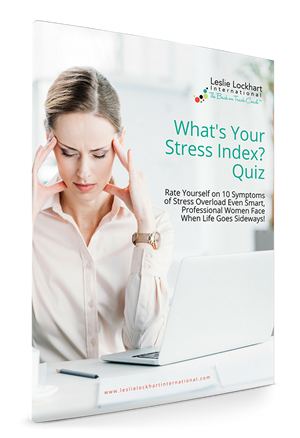Would you be surprised to know that we drag pre-loaded baggage into our difficult feelings?
You bet we do! Let me unpack a few of those pieces...
- We do whatever we can to avoid or distract ourselves from feeling any of the ‘bad’ feels. We’ve been taught that our ‘bad’ feelings aren’t for show and tell….
- Our negative thoughts – conscious or subconscious – trigger negative emotions and feelings. What goes on in our heads, directly influences how we feel….
- We tend to react and process our difficult emotions in a negative or unhealthy way. This creates problems because how we feel emotionally can have a big effect on our health.
I don’t know about you, but I’ve seen so much baggage being paraded around far too much lately!
It’s now one year since COVID-19 was declared a pandemic, and our world changed. Literally.
We’ve all had to transition through difficult changes and restrictions placed on our everyday lives.
COVID-19 has certainly shone a bright light on the negative emotions that show up when times are difficult.
Of course, difficult feelings are not solely unique to COVID-19; nor are they new to humankind.
That’s because even without the challenging circumstances of this past year, dealing with difficult feelings and emotions can be hard.
COVID-19 just happens to be the perfect petri dish for examining negative emotions.
And in this second part of a 2-part series, we take a deeper dive into the pros and cons of some common negative emotions, plus I give you a healthy way to handle them.
If you missed Part 1 of this 2-part series, you can read it here.
THE PROS & CONS OF 5 COMMON NEGATIVE EMOTIONS
Over the course of this past year in my coaching practice, the five most common negative emotions I’ve seen have been anger, fear, anxiety, sadness, and guilt.
As we dig into each of these examples, it’s important to remember that ANY negative emotion…
- Is perfectly normal to feel;
- Has its own upside – it’s usually rooted in keeping us safe and serves as a catalyst to make some kind of change in our life;
- Has a downside – if it’s not processed and managed in a healthy way, it can become a problem.
So, let’s take a bigger peek….
Anger
ANGER is how we react when we have no control over what’s happening, things are not going in a way that meets our needs, or we perceive an injustice.
Related feelings: Frustration, irritability, annoyance, jealousy, resentment, animosity.
Upside: Can be a strong motivator to actively find solutions to what threatens us – and in extreme cases – to help us survive.
Can become a problem if it… Escalates out of control (as in verbal or physical outbursts)… OR, if it becomes the usual default reaction to most scenarios… OR, if it’s bottled up and repressed.
When negative emotions are poorly managed, it’s been proven that anger is the one emotion that has the biggest deficit on our health and well-being. It’s probably the emotion that we most want to keep in check.
Fear
FEAR is how we react when we don’t feel safe – whether the threat is real or imagined – or during times of uncertainty. Fear is core to our sense of survival or self-preservation.
Related feelings: Chronic anxiety, insecurity, or trauma.
Upside: Can rally us to focus our attention and awareness, and mobilize us to cope with imminent threats (as in the fight-flight-freeze response).
Can become a problem if it… Is imagined (vs. the reality of a situation)… OR, if the fear immobilizes and holds us back from doing things we’d like to do, or in some way impairs our everyday life.
Anxiety
ANXIETY is a natural stress reaction. It’s a feeling of apprehension about what is to come.
Related feelings: Fear, worry, stress, unease.
Upside: Can energize or motivate us into action. It heightens our attention and prepares us to cope in the event of potentially difficult or worst-case scenario situations.
Can become a problem if it… Persists… OR, is extreme and interferes with our everyday life (as in panic attacks, anxiety disorders, etc.),
Sadness
SADNESS is a healthy emotional response to some form of loss and/or pain.
Related feelings: Depression, grief, hopelessness, despair, lethargy, isolation, regret, feelings of nostalgia.
Upside: Alerts us to a need for attention, care, or compassion – both for ourselves and others – and provokes support, empathy, and care from others.
Can become a problem if it… Persists (Depression)… OR, if it causes us to develop avoidance coping habits (as in isolating ourselves, self-medicating, ruminating on the negative, etc.).
Guilt
GUILT – also coined the ‘moral emotion’ – is how we react to the pain of remorse and feeling accountable when our behavior has been less than stellar.
Related feelings: Depression, anxiety, shame.
Upside: Serves either as a deterrent to not repeat our negative behavior, or as a catalyst to change it.
Can become a problem if it… Causes significant anxiety… OR, it lowers our self-esteem… Or, makes us hyper-sensitive about possibly making the ‘wrong’ decision
Negative emotions – with all their upsides and downsides – are a very normal, healthy part of life.
BUT… in my work as stress and transition coach, one of the biggest issues I’ve noticed – especially this past year – is how DISCONNECTED most of us are from what we feel.
WHY?
Because we were taught to quash any expression of unpleasant feelings!
So it makes perfect sense that we shy away from emotions that make us feel bad.
But as we saw in Part 1 of this 2-part series, that is NOT a healthy solution.
The truth is, all emotions are a source of information… even the negative ones!
All negative emotions tend to show up as warning signs to keep us safe.
They’re a beautifully designed built-in alarm system that alert us that we need to do something to take care of ourselves.
When we’re in a good space, this all makes sense.
Intellectually, we all KNOW we need to manage our negative emotions with healthy strategies.
But when we get caught up in a negative vortex, it all goes out the window, right?
And that negative energy can be SOOOO HEAVY….
What do we do then? What do we do with difficult feelings and emotions that start to consume us, or keep us stuck?
3 STEPS TO NAVIGATE NEGATIVE EMOTIONS.
I want to pause right here and encourage you to take a minute to CONGRATULATE yourself.
Because if you’re reading this section it tells me that you have the curiosity, motivation, and will to find your way through a negative-feeling rut.
And THAT is a healthy, resilient response!
So, yay YOU!
Try this ‘Triple A’ exercise to process negative emotions
This simple 3-step process can help you cope with your negative feelings, if:
… You numb out or avoid them
… You’re not expressing them in a healthy way
… They’re getting out of hand and keeping you stuck
… You’re getting caught up in ruminating behaviors
Aside from amazing results, practicing this process will develop your understanding of how you approach or react to negative experiences.
And while it can help you with today’s difficult pandemic-related emotions, it will prepare you well for ANY future life challenges.
To get full benefit from this process, I recommend journaling or writing. Meditation also works. And a third option many of my clients like is to merely set some quiet time aside to mentally run through the Triple A steps.
Let’s dive in….
Step 1: Awareness – Begins a process of healthy healing, processing & resiliency
Purpose of this step: To shine a curious light on our feelings and emotions about what’s there.
What to do: Ask yourself… What am I feeling right now?
Looking to your body for signs is a helpful start: Where in your body is there muscle tension, tightness, butterflies, a sinking feeling, etc.).
Then ask: What else am I feeling? And what else? And what else?
Really dig to identify exactly what it is that you’re truly feeling – drop your facades.
Tip! Stay curious about WHAT you’re feeling instead of WHY. Asking “why” puts us into thinking mode and distracts us from feeling.
Step 2: Acknowledgment & Validation – Recognizes and validates what we feel without any opinion or judgement
Purpose of this step: To recognize that the feelings we have are in response to something, and reminds us that whatever we feel is okay.
What to do:
1st Step – Acknowledge yourself…. Okay, so I’m feeling [Step 1 feeling(s) above];
2nd Step – Validate your feelings…. Ask yourself: So, what is it like to feel that feeling?
Tip! Validating one feeling at a time, gives you a better opportunity to discover surprising insights and self-awareness.
Step 3: Acceptance – Allows space for our feelings to exist as a natural part of who we are (even the messy ones)
Purpose of this step: The end goal is to release our negative emotions. In order to do that, we must first accept that they even exist.
Once we accept that our negative emotions are a natural part of who we are, we can then begin to change or reframe how to respond vs react to them.
What to do: Sit and experience your negative feeling… Just for a moment, observe what you feel… ALLOW yourself to feel it… and then let it BE.
This process can be emotional, so we need to be gentle with ourselves and use self-compassion if we get mad or burst into tears, for example. Know that it’s all a normal release of feelings and emotions.
This is definitely a tough-love step because nobody enjoys sitting in messy, painful feelings.
But, it’s important to stick with it and allow yourself to BE with your feelings for a few moments. It will be so worth the effort!
A noticeable shift in your energy – or your body – will be the signal that you’re ready to move on.
Tip! Ask yourself these wrap-up questions: How do I feel now? What was this experience like for me? What can I take away or learn from this experience?
“Never apologize for showing feelings. When you do so, you apologize for truth.”
― Benjamin Disraeli
Your take-away?
It’s inevitable to feel angry, scared, anxious, sad, or guilty. Be open to embracing negative emotions as an important part of life and accept that you feel them.
After a challenging year, it’s time to rebalance yourself and get off the “emotional rollercoaster” by staying aware and open to your negative emotions.
You’ve GOT this, Bella! xx
Struggling with difficult emotions and feelings? I can help you with coping strategies that will improve your mental and emotional health and well-being.
Book a FREE Clarity Chat with me on my calendar by clicking this button.
Is your emotional stress level making it impossible to be optimistic about ANYTHING? Want to get a better handle on your stress triggers and avoid the health effects of burnout?

It’s smart to be AWARE of your stress symptoms. I created a quick quiz that does just that. Sign up here to get your quiz.
What are some negative emotions you experience?
I’d love to hear from you… What are your thoughts and experiences handling negative emotions? Leave me your comments in the space below (and thanks for sharing!).

